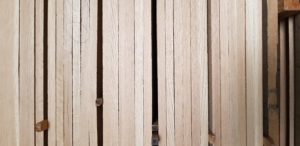
It is at design stage that most of the characteristics of a product throughout its life cycle (from raw-materials extraction and processing, manufacturing, distribution use, end of life) are defined: it is estimated that 70-80% of the environmental impacts are determined in design.
CE is about maintaining the function and value of products, components and materials at the highest possible level and extending their lifespan – how can design & development of products and services help?
Design for durability means to apply design strategies that:
- Foster a strong product-user relationship
- Produce resistant, easy to maintain and repairable products
- Use modularity to allow the upgrading and adaptation of products
- Make it easy to dis- and reassemble products.
In design for recycling, designers aim:

- To develop products in such way that the materials can be continuously and safely recycled into new materials and products.
- To use safe and healthy materials for those products that are consumed or worn during use, and thus create food for the natural systems.
Service design:
- To extend the lifetime of it is also necessary to develop maintenance, repairing, reuse and reverse logistics services; example: to buy a washing machine with extended warranty and repair service.
- Sharing, leasing and renting are services that provide the capability to satisfy user expectations without needing to own physical products (sharing economy, from consumer to user); example: to use the service of a laundromat – the client is responsible for the washing operation.
- In services that deliver performance, the client or consumer is only interested in the result and not at all in the product or technology behind it; example: to use laundry services.

The right combinations of product and service design strategies supports circular economy by:
- Closing resource flows – through recycling, the loop between post-use and production is closed, resulting in a circular flow of resources
- Slowing resource flows – the utilization period of products is extended and/or intensified, resulting in a slowdown of the flow of resources
- Narrowing flows – using fewer resources per product or service unit.
For these products and services to be successful in the market, companies need to develop adequate business models.
